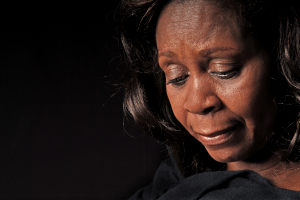The Death of Psychoanalysis and Depth Psychotherapy
 Who Killed It?
Who Killed It?
Several factors have been proposed to explain the gradual demise of psychoanalysis and depth therapy, including the prolonged treatment time inherent in the process, monetary considerations, the time constraints of managed care, and the increased medicalization of psychology. However, I believe that this demise is closely related to an implicit cultural movement to squelch serious inquiry into family dynamics and interpersonal relationships, particularly the physical, sexual, and emotional abuse of children. Clearly, this is a dangerous trend for society. How can we hope to develop a better quality of family life if we do not honestly scrutinize the dynamics of present-day family interactions? We must effectively account for the high rate of adolescent suicide, violence in our schools, the widespread use of drugs and the many other symptoms of emotional disturbance in our young people.
The Field and the Counter-culture Movement
When I was a practicing psychotherapist (1957-1977), psychoanalysis and depth psychotherapy were flourishing and had a prominent place in the foreground of a cultural revolution. At that time, the majority of clinical psychologists considered it a virtual necessity to experience their own depth psychotherapy to better understand the individuals they would be treating. There was a spirit of optimism and idealism that permeated the mental health profession and a deep investment in the psychological approach to emotional maladies.
It was an era when millions of young people were fighting for their ideals in a valiant attempt to find a better life. The youth movement was characterized by sentiments that questioned the lack of meaning in people’s lives, and that challenged the status quo materialism of the American scene. The youth movement favored self-development, self-expression, and sexual freedom. It exposed the weaknesses and hypocrisy in the traditional family and placed a high value on individuality and human decency. As Russell Jacoby noted: “There was an obvious affinity between the youth rebellion and psychoanalysis.”
The youth movement and its aspirations were thwarted by the fact that its positive thrust was accompanied by a guilt and fear reaction that led to the ever-increasing utilization of drugs and alcohol. This misguided attempt to quiet the emotional pain and anxiety that resulted from rebelling against societal norms, challenging the nuclear family, and seeking independence weakened them and eventually led to the downfall of their movement. These young men and women simply could not cope with their personal demons, reflections of their childhood trauma.
During this period of experimentation and upheaval, people were concerned with their personal psychological development more than ever before. The “antipsychiatry” campaign reflected in the work of renown psychiatrists R.D. Laing and Thomas Szasz, and the influence of Eastern thought as reflected by Alan Watts, generated a process of change that affected the culture at large. At this time, many psychologists were involved in sensitivity training groups, marathons, workshops, and encounter groups, procedures that broke out of the narrow confines of the psychotherapy office setting and extended into the business arena, education, and even international relations. People were challenging the status quo in every aspect of their psychological lives and were willing to look at painful issues.
In the course of these events, many important but disturbing truths were being revealed. The hidden aspects of both sexuality and family life were brought into sharp focus and people’s most cherished defenses were threatening to be uncovered. Nothing was considered too sacred to be exposed to scrutiny.
Guilty- Society at large
Although the truth may eventually promote healing, when first manifested, it generally inspires terror. Something has to be done about the discomfort. This same story has echoed throughout time. In the 70’s, there was the expected societal counterattack, and it affected both the youth movement and the practice of psychotherapy.
What is of primary concern is the fact that the methodologies of free association, dream analysis, feeling release therapies, group encounters, and the like were valuable resources, windows into the unconscious mind and an illumination of previously unavailable psychological phenomena. Because these methods revealed deep-seated secrets of family dynamics, they were, by their essential nature, threatening to the status quo in the social milieu. The ensuing reaction of society was predictable and eventually the “menace” was effectively extinguished.
The bulwarks of society, initially outraged by these new developments, gradually homogenized and integrated some of the ideology. This partial ingestion was more effective at undermining the progressive movement than a direct confrontation. At that time, everyone spoke in psychological terms, the jargon of self-help and self-actualization ran rampant, and people mouthed the platitudes of the freedom movement until they became banal. Then, subtly at first, and later with increased momentum, there was an insidious conservative backlash that invalidated much of what had been learned. The subsequent decline of psychoanalysis and depth therapy over the following 35 years can be attributed in large part to this reactionary movement that sought, among other things, to deny the veracity of insights achieved by both patients and therapists in the treatment modality.
Malevolent societal forces have succeeded in almost completely suppressing important knowledge concerning the widespread incidence of emotional, physical, and sexual child abuse in “normal” families and the ensuing long-term harmful effects. Currently, cultural attitudes of indifference and denial continue to exert a powerful influence on the field of psychotherapy and have, in large part, transformed it from a creative, compassionate enterprise to a weak and frightened community of mental health professionals irresponsibly dispensing drugs or other quick fixes that support the status quo.
Like other attempts that have been made throughout history to suppress knowledge and insight, these efforts were on a par with book burning and other egregious forms of censorship. When this type of revelation is stifled, in spite of all of our amazing technological advances, we are thrown back into the Dark Ages.










Thank you for this article. You make cogent and important points. Psychoanalysis is not completely dead and may still be revived. I’m a psychoanalyst and find that a great many people are extremely receptive to analytic ideas, principles and treatment.
When I was first in grad school a little over a decade ago, I was told that “nobody does psychoanalysis anymore.” I was fortunate to find a clinical supervisor who was an analyst, and soon learned what psychoanalysis is, and isn’t.
I find that people are often intrigued and relieved by the idea of an unconscious, that which is out of awareness but not out of operation. They just need to know more about what psychoanalysis and depth psychology is, and isn’t – and then perhaps we’ll see a swing back towards psychological truth, investigation and transformation.